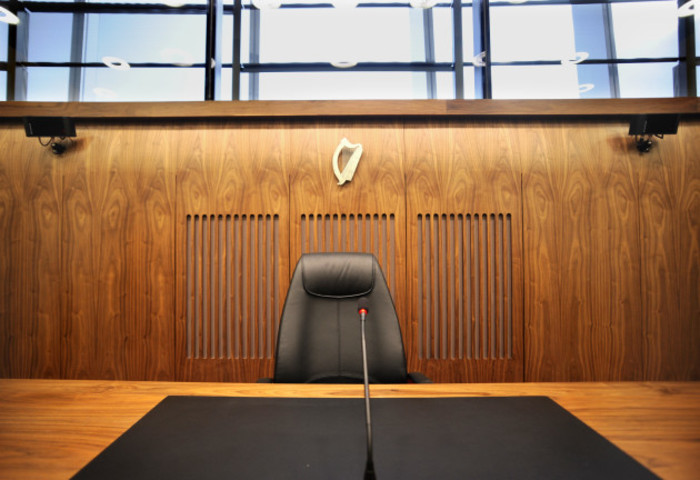How employers can protect themselves against unfair dismissal claims
This law expert delivers a masterclass in disciplining someone fairly.
WHEN IT COMES to dealing with disciplinary procedures and dismissals, the main area where employers tend to fall down is the procedure.
It’s important to remember that if a dismissal is challenged under the Unfair Dismissals Act, the onus is on the employer to prove that it was fair.
For a dismissal to be deemed fair, it must not only be substantively fair – in other words, it must be warranted – it must also be procedurally fair.
Normally what employers are found wanting on and what’s likely to lead to a finding of unfair dismissal is that somewhere along the line, they’ve messed up in the procedure.
It’s difficult to get the procedure 100% right, because the standard you’re expected to adhere to is high. But there are a few essential steps you can take to ensure you’re in the best position possible should you ever find yourself before a Workplace Relations Commission (WRC) adjudication officer.
Disciplinary procedure
Every employer should have a disciplinary procedure in place. In fact, the Unfair Dismissals Act requires employers to provide employees with a written notice of the procedure to be followed for the purposes of dismissal.
As an employer may want to amend a disciplinary procedure over time, to take account of changes in the workplace and in line with developments in the law and best practice, I would recommend against making the disciplinary procedure part of the contract as any subsequent changes to the contract will require the employee’s consent.
Rather, I would advise employees to keep the disciplinary procedure separate to the contract – usually in the employee handbook along with other employment policies and procedures.
The procedure should clearly set out the steps to be taken in dealing with disciplinary issues. Employers should ensure that they know their own disciplinary procedures and follow them. If necessary, providing appropriate training to managers who may be required to implement them.
A disciplinary procedure must comply with the principles of natural justice and fair procedures, the key features of which include:
- The employee’s right to be advised of the allegations against them;
- The opportunity to fully respond to those allegations;
- The right to an independent and impartial determination of the allegations.
The employee will also need to be advised of the range of potential sanctions they may be facing if the allegations are upheld.
A dismissal should always be the last resort or reserved for only the most serious cases of misconduct. Otherwise, it should really be a progressive procedure: a verbal warning, followed by a first and then final written warning.
You should keep a record to prove you’ve followed these steps. Any warnings given should be for a specified length of time, typically six to 12 months, depending on the seriousness of the breach. Thereafter, the warning should be removed from the employee’s file.
Investigation
The first step in the disciplinary process, after the employee has been notified in writing of the allegations, is the investigation.
In light of recent High Court decisions on the subject of workplace investigations, it is recommended that investigations be confined to fact gathering (as opposed to fact finding), the purpose being to determine whether there is sufficient evidence to proceed to a disciplinary hearing, rather than drawing any conclusions as to whether the alleged breach occurred.

In some circumstances, it may be appropriate to appoint an external investigator to conduct the investigation.
Disciplinary hearing
Where the investigator concludes that there is a case to be answered, the matter will proceed to a disciplinary hearing.
The person who conducts the hearing should not be the same person who conducted the investigation. Both must be impartial and neither should have any prior involvement in the matter, such as being a witness, or have any interest in the outcome.
At the hearing stage, the person against whom the allegations are made must be given the opportunity to put their own case forward. Essentially, they should be given the chance to defend themselves so they can have their say and call witnesses on their own behalf.
Normally the disciplinary procedure will provide that the employee may be accompanied by a colleague or trade union representative. The right to legal representation only arises in exceptional circumstances and where the employee is at risk of being dismissed.
Recent High Court decisions would tend to suggest a broadening of this right to any case in which dismissal is a potential outcome, but it remains to be seen whether this will become the norm in practice.
Appeal
The disciplinary procedure should always provide for the right of appeal, not just in cases of dismissal but lessor sanctions too. The appeal should be dealt with by someone who has had no prior involvement at any earlier stage in the procedure.
Claims
Employers always need to be prepared for the eventuality that they could find themselves before the WRC.
Even where an employee is caught red-handed, if the employer hasn’t followed their disciplinary procedure, or where their disciplinary procedure is found wanting, they could find an award being made against them.
That is why getting the procedure right from the start is so important. Having the relevant paperwork to show you’ve complied with fair procedures is also essential, particularly as the onus is on the employer to prove that the dismissal is fair.
The content of this article is provided for information purposes only and does not constitute legal or other advice.
Maria Gallagher is senior associate at legal services firm Philip Lee. This article was written in conversation with Conor McMahon as part of a series of masterclasses with some of Ireland’s most influential business people.
Sign up to our newsletter to receive a regular digest of Fora’s top articles delivered to your inbox.






